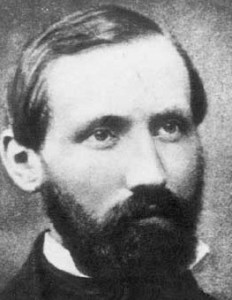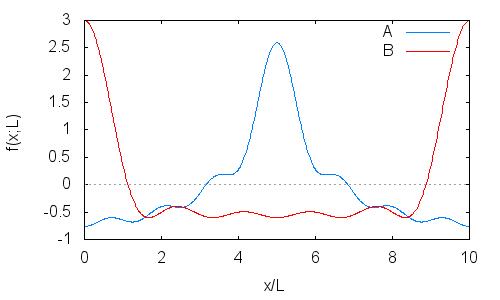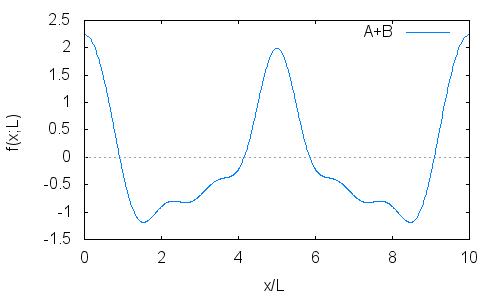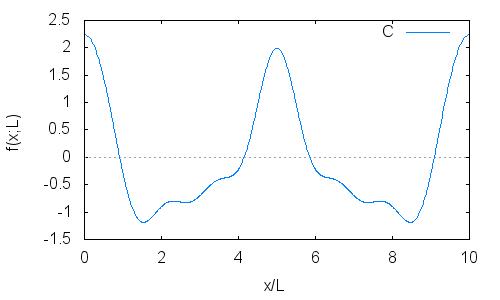Quantum Evolution – Part 3
In the last post, the key equation for the quantum state propagation was derived to be
\[ \psi(\vec r_2, t_2) = \int d^3r_1 K(\vec r_2, t_2; \vec r_1, t_1) \psi(\vec r_1, t_1) \]
subject to the boundary condition on the propagator that
\[ \lim_{t2 \rightarrow t_1} K(\vec r_2, t_1; \vec r_1, t_1) = \left< \vec r_2 \right| U(t_1,t_1) \left| \vec r_1 \right> = \left< \vec r_2 \right. \left| \vec r_1 \right> = \delta(\vec r_2 – \vec r_1) \; . \]
A comparison was also made to the classical mechanics system of the simple harmonic oscillator and an analogy between the propagator and the state transition matrix was demonstrated, where the integral over position in the quantum case served the same function as the sum over state variables in the classical mechanics case (i.e., $$\int d^3r_1$$ corresponds to $$\sum_i$$).
The propagator and the state transition equations also share the common trait that, being deterministic, states at later times can be back-propagated to earlier times as easily as can be done for the reverse. While mathematically sound, this property doesn’t reflect reality, and we would like to be able to restrict our equations such that only future states can be determined from earlier ones. In other words, we want to enforce causality.
This condition can be meet with a trivial modification to the propagator equation. By multiplying each side by the unit step function
\[ \theta(t_2 – t_1) = \left\{ \begin{array}{ll} 0 & t_2 < t_1 \\ 1 & t_2 \geq t_1 \end{array} \right. \]
the quantum state propagation equation becomes
\[ \psi(\vec r_2,t_2) \theta(t_2 – t_1) = \int d^3r_1 K^+(\vec r_2, t_2; \vec r_1, t_1) \psi(\vec r_1, t_1) \; ,\]
where the object
\[K^+(2,1) \equiv K^+(\vec r_2, t_2; \vec r_1, t_1) = K(\vec r_2, t_2; \vec r_1, t_1) \theta(t_2 – t_1)\]
is called the retarded propagator, which is subject to an analogous boundary condition
\[ \lim_{t_2 \rightarrow t_1} K^+(\vec r_2, t_1; \vec r_1, t_1) = \theta(t_2 – t_1) \delta(\vec r_2 – \vec r_1) \; .\]
With this identification, it is fairly easy to prove, although perhaps not so easy to see, that $$K^+(2,1)$$ is a Greens function.
The proof starts by first defining the linear, differential operator
\[ L \equiv -\frac{\hbar^2}{2m} \nabla_{\vec r_2}^2 + V(\vec r_2) – i \hbar \frac{\partial}{\partial t_2} \; .\]
Schrodinger’s equation is then written compactly as
\[ L \psi(\vec r_2, t_2) = 0 \; . \]
Since the quantum propagator obeys the same differential equation as the wave function itself, then
\[ L K(\vec r_2, t_2; \vec r_1, t_1) = 0 \; ,\]
as well.
The final piece is to find out what happens when $$L$$ is applied to $$K^+$$. Before working it out, consider the effect of $$L$$ on the unit step function –
\[ L \theta(t_2 – t_1) = \left( -\frac{\hbar^2}{2 m} \nabla_{\vec r_2}^2 + V(\vec r_2) – i \hbar \frac{\partial}{\partial t_2} \right) \theta ( t_2 – t_1 ) \\ = -i \hbar \frac{\partial}{\partial t_2} \theta (t_2 – t_1) = -i \hbar \delta(t_2 – t_1) \; .\]
Now it is easy to apply $$L$$ to $$K^+(2,1)$$ using the product rule
\[ L K^+(2,1) = L \left[ \theta(t_2 – t_1) K(2,1) \right] \\ = \left[L \theta(t_2 – t_1) \right] K(2,1) + \theta(t_2 – t_1) \left[ L K(2,1) \right] \; .\]
The first term on the right-hand side is $$-i \hbar K(2,1) \delta(t_2 – t_1)$$ and the last term is identically zero. Substituting these results back in yields
\[ L K^+(2,1) = -i \hbar K(2,1) \delta(t_2 – t_1) \; .\]
For $$K^+(2,1)$$ to be a Greens function for the operator $$L$$, the right-hand side should be a product of delta-functions, but the above equation still has a $$K(2,1)$$ term, which seems to spoil the proof. However, appearances can be deceiving, and using the boundary condition on $$K(2,1)$$ we can conclude that
\[ K(\vec r_2, t_2; \vec r_1, t_1) \delta(t_2 – t_1) \\ = K(\vec r_2, t_1; \vec r_1, t_1) \delta(t_2 – t_1) = \delta(\vec r_2 – \vec r_1) \delta(t_2 – t_1) \; .\]
Substituting this relation back in yields
\[ \left( -\frac{\hbar^2}{2m} \nabla_{\vec r_2}^2 + V(\vec r_2) – i \hbar \frac{\partial}{\partial t_2} \right) K^+(\vec r_2, t_2; \vec r_1, t_1 ) \\ = – i \hbar \delta(\vec r_2 – \vec r_1 ) \delta(t_2 – t_1) \; ,\]
which completes the proof.
At this point, the reader is no doubt asking, “who cares?”. To answer that question, recall that the only purpose for a Greens function is to allow for the inclusion of an inhomogeneous term in the differential equation. Generally, the Schrodinger equation doesn’t have physically realistic scenarios where a driving force can be placed on the right-hand side. That said, it is very common to break the $$L$$ operator up and move the piece containing the potential $$V(\vec r_2) \psi(\vec r_2,t_2)$$ to the right-hand side. This creates an effective driving term, and the Greens function that is used is associated with the reduced operator.
To make this more concrete, and to whet the appetite for future posts, consider the Schrodinger equation written in the following suggestive form
\[ \left( i \hbar \frac{\partial}{\partial t} – H_0 \right) \left| \psi(t) \right> = V \left| \psi(t) \right> \; ,\]
where $$V$$ is the potential and $$H_0$$ is some Hamiltonian whose spectrum is exactly known; usually it is the free particle Hamiltonian given by
\[ H_0 = – \frac{\hbar^2}{2 m} \nabla^2 \;. \]
The strategy is then to find a Greens function for the left-hand side such that if $$L_0 \equiv i \hbar \partial_t – H_0$$ then the solution of the full Schrodinger equation can be written symbolically as
\[ \left| \psi(t) \right> = L_0^{-1} V \left| \psi(t) \right> + \left| \phi(t) \right> \; , \]
where $$\left| \phi(t) \right>$$ is a solution to $$L_0 \left| \phi(t) \right> = 0$$, since applying $$L_0$$ to both sides yields
\[ L_0 \left| \psi(t) \right> = L_0 \left[ L_0^{-1} V \left| \psi(t) \right> + \left| \phi(t) \right> \right] \\ = L_0 L_0^{-1} V \left| \psi(t) \right> + L_0 \left| \phi(t) \right> = V \left| \psi(t) \right> \; .\]
This type of symbolic manipulation, with the appropriate interpretation of the operator $$L_0^{-1}$$ results in the Lippmann-Schwinger equation used in scattering theory.




